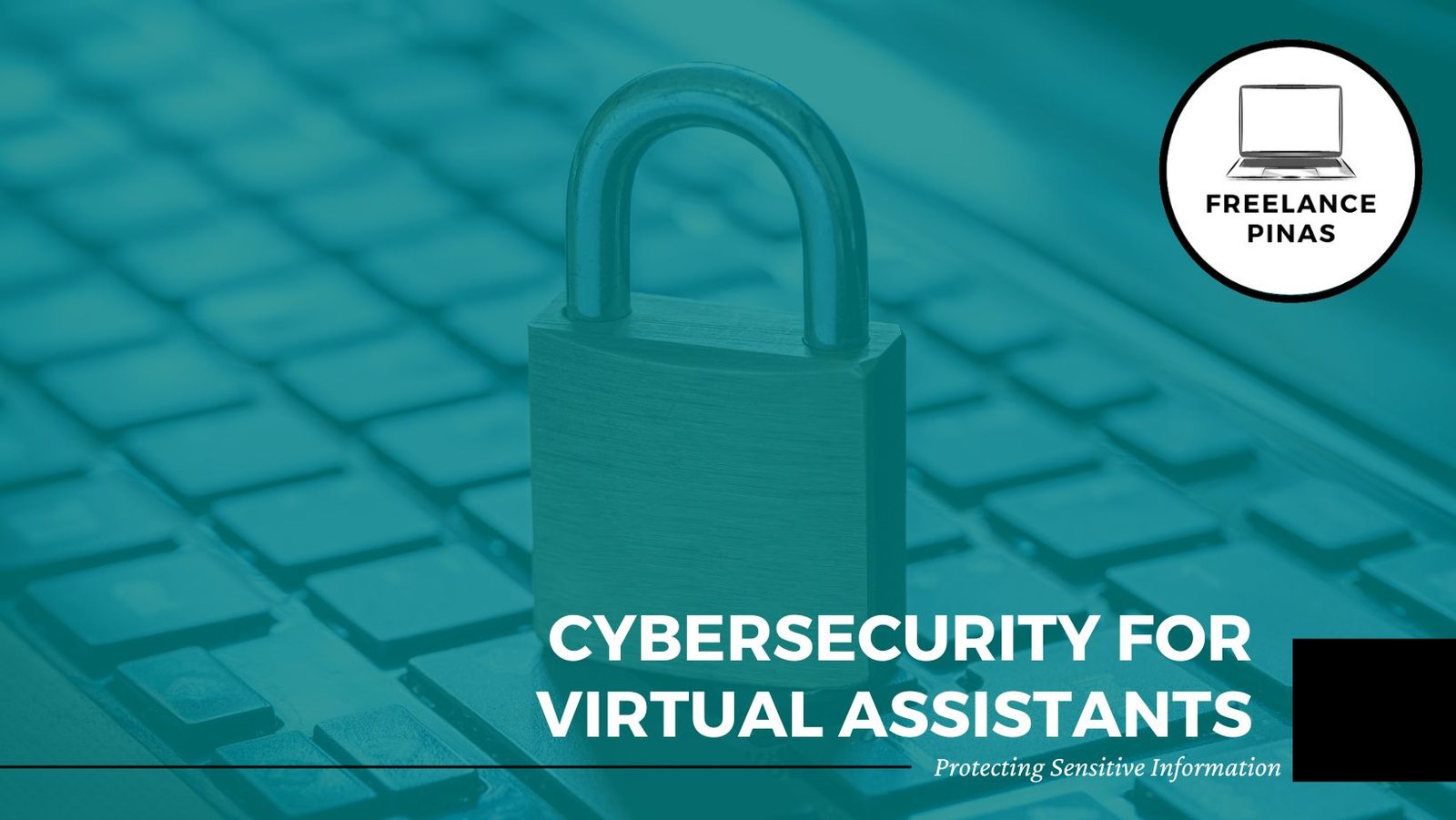In the fast-paced realm of virtual assistance, ensuring robust cybersecurity measures is paramount. Virtual Assistants (VAs), entrusted with sensitive client data, must navigate a digital landscape fraught with potential cyber threats. This comprehensive guide aims to empower VAs with the knowledge and tools necessary to establish a secure digital environment, fostering client trust and professional integrity.
Understanding the Cybersecurity Landscape for VAs
1. Overview of Virtual Assistance Security Risks
Operating within a digitally driven environment exposes VAs to specific cybersecurity risks. Understanding these risks is crucial to implementing effective protective measures.
2. Client Confidentiality: A Top Priority
The legal and professional implications of data breaches emphasize the paramount importance of maintaining client confidentiality. VAs must grasp the potential impact on their work and client relationships.
Best Practices for Cybersecurity
Implementing best practices is fundamental to establishing a secure virtual workspace for VAs.
3. Secure Communication Channels
Encrypted communication tools and platforms ensure that sensitive discussions and information remain confidential. Utilizing such tools enhances the overall security of virtual interactions.
4. Password Management
Effective password management, including the use of strong, unique passwords and regular updates, is essential in fortifying access controls.
5. Two-Factor Authentication (2FA)
The adoption of 2FA adds an extra layer of protection, enhancing access controls and safeguarding against unauthorized logins.
Tools and Technologies for VA Cybersecurity
Selecting the right tools is crucial for maintaining a secure virtual environment.
6. Virtual Private Networks (VPNs)
VPNs secure internet connections, protecting data and ensuring the privacy of online activities. VAs should leverage VPNs, especially when working remotely.
7. Firewall Protection
Firewalls act as a barrier against unauthorized access, providing an additional layer of protection against cyber threats.
Educational Resources and Training
Continuous learning and staying informed about cybersecurity trends are integral to a VA’s role.
8. Cybersecurity Awareness Training
Regular training sessions sharpen skills and awareness regarding the latest cybersecurity threats. VAs should actively seek opportunities to enhance their knowledge.
9. Recognizing Phishing Attempts
VAs need the skills to identify and thwart phishing attempts, emphasizing the importance of recognizing red flags in potentially malicious communications.
Creating a Cybersecurity Action Plan
Developing a proactive cybersecurity strategy involves creating an action plan.
10. Personal Security Measures
Proactive measures for personal cybersecurity, including regular system updates and secure Wi-Fi practices, contribute to an overall secure virtual environment.
11. Emergency Response Plan
VAs should develop an emergency response plan to address and mitigate cybersecurity incidents swiftly, minimizing potential damage.
Future Trends in VA Cybersecurity
The cybersecurity landscape is dynamic, and VAs should stay ahead of the curve.
12. Integration of AI in Security
Artificial Intelligence (AI) plays a crucial role in enhancing VA cybersecurity. Advanced threat detection and automated response mechanisms are increasingly vital components of a comprehensive cybersecurity strategy.
Strengthening Your Virtual Fort
Prioritizing cybersecurity contributes not only to protecting client information but also to the overall integrity and trustworthiness of the virtual assistant profession. By adopting these cybersecurity practices, Virtual Assistants can fortify their virtual fort against potential cyber threats, ensuring a secure and resilient digital workspace.
